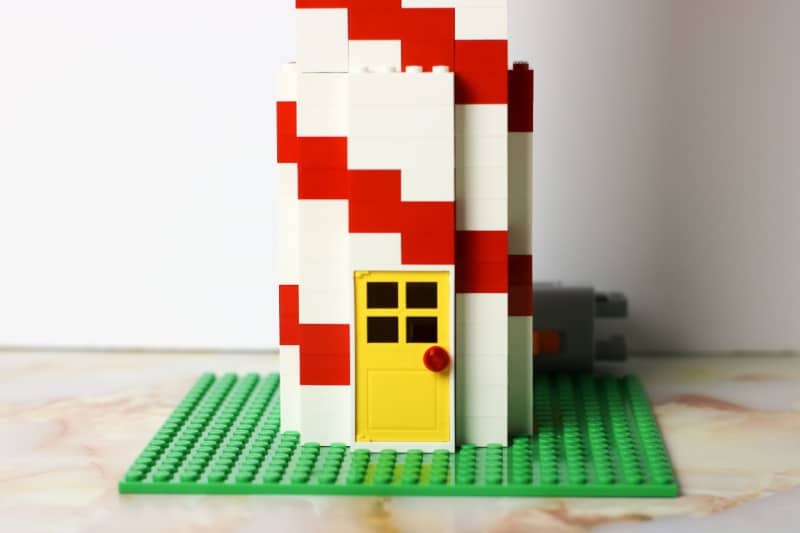Last Updated on March 20, 2023 by ellen
Wondering about the best puzzles for kids? Check out my tips for choosing jigsaw puzzles for younger kids to make the perfect puzzle.
Posts may be sponsored. This post contains affiliate links, which means I will make a commission at no extra cost to you should you click through and make a purchase. As an Amazon Associate I earn from qualifying purchases.
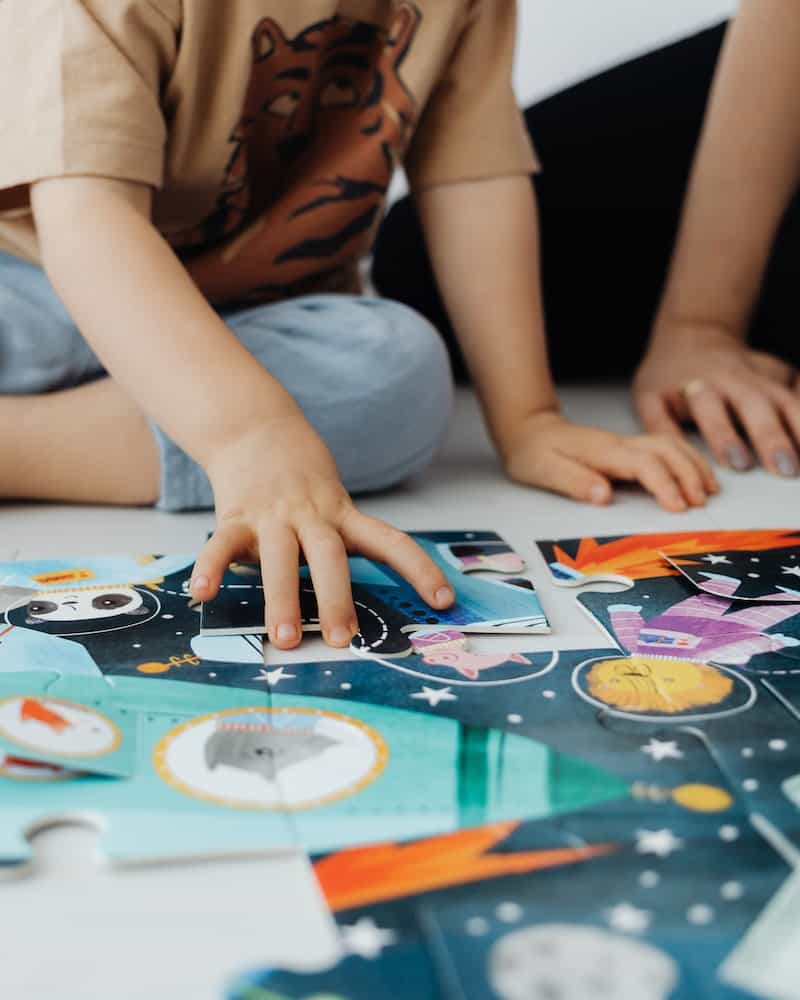
Table of Contents
Best Puzzles for Kids
Puzzles are an excellent way to improve fine motor skills in younger children. And they help develop critical thinking skills in kids of all ages.
No matter your child’s age, they will have fun putting together a jigsaw puzzle. You can reduce screen time by offering various puzzles and games suitable for your child’s age.
Make sure you choose a puzzle based on kids’ ages, so you get the right puzzle for their developmental level.
A puzzle with too many pieces can be quite a challenge. But, it may end up frustrating them.
What is a classic jig saw puzzle?
A jigsaw puzzle is a puzzle that requires the assembly of interlocking pieces. Classic jigsaw puzzles were created by painting a picture on a flat sheet of wood and then cutting out pieces with a jigsaw.
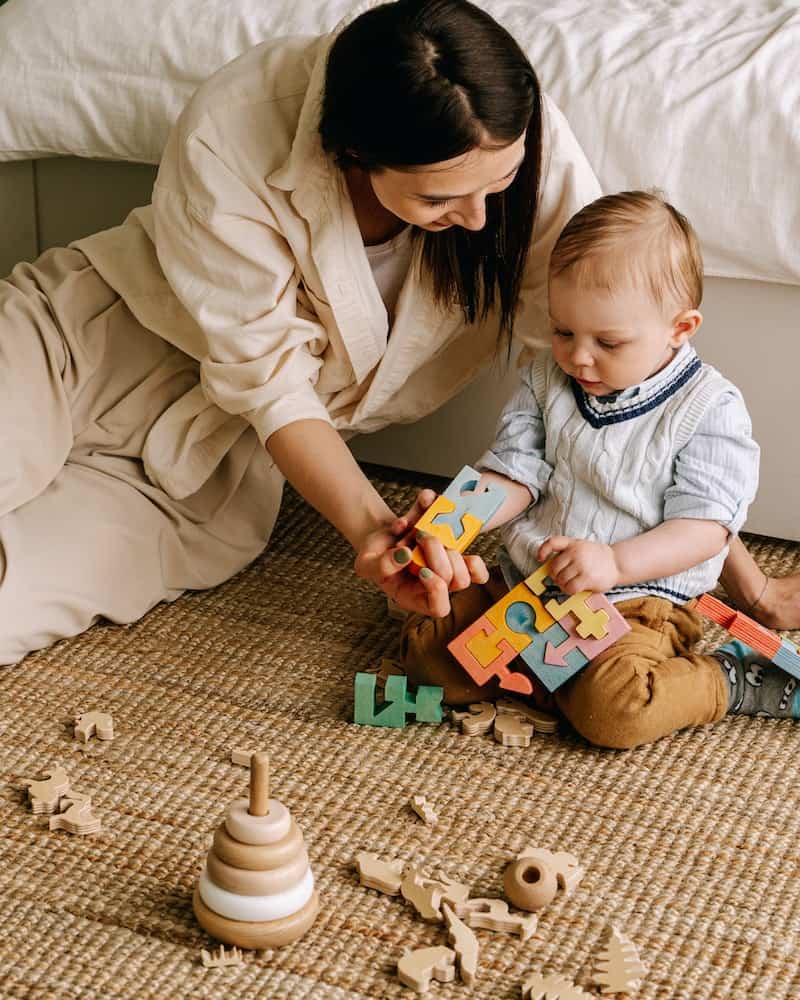
Benefits of jigsaw puzzles for younger kids
Puzzles help with the development of fine motor muscles and hand-eye coordination. These are the small muscle movements that occur in the hands and fingers. With regular practice, these muscles become strong and agile.
Classic jigsaw puzzles for kids also aid in the development of problem-solving skills. To complete a puzzle, kids must think about what puzzle pieces will fit together. They must look at the big picture and break it down into smaller pieces.
Puzzles are also a great way to promote cooperation and teamwork. Kids need to work together to complete the puzzle. This can help them develop communication and social skills.
Puzzles are also a great way to relieve stress. They can help kids focus and concentrate. And they provide a sense of satisfaction when the puzzle is completed.
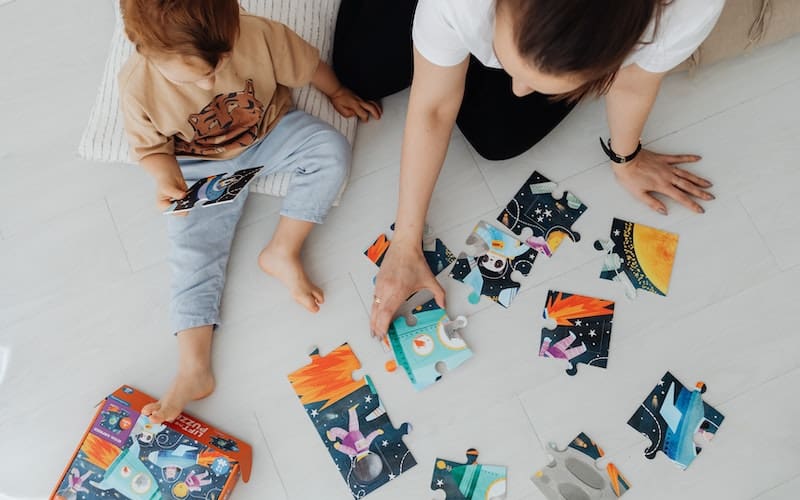
Tips for choosing jigsaw puzzles for kids
When choosing a jigsaw puzzle for your children, it is important to consider their age and interests. There are many different types of puzzles available, so you should be able to find one that is suitable for your children.
If your children are ages 3 or less, it is best to choose a colorful puzzle with large pieces like a wooden shapes sorter. These wooden puzzles should have between six and twelve pieces. The pieces should be made from durable materials such as wood or plastic.
You can choose puzzles with up to fifty pieces for kids aged three to six years old. These puzzles can be made from different materials, including cardboard, foam, or plastic. Fewer pieces might be appropriate if your kid is easily frustrated.
Kids aged seven and up can handle a classic jigsaw puzzle with a hundred or more pieces. However, choosing a puzzle that is not too difficult is important. Otherwise, your child will become frustrated and give up.
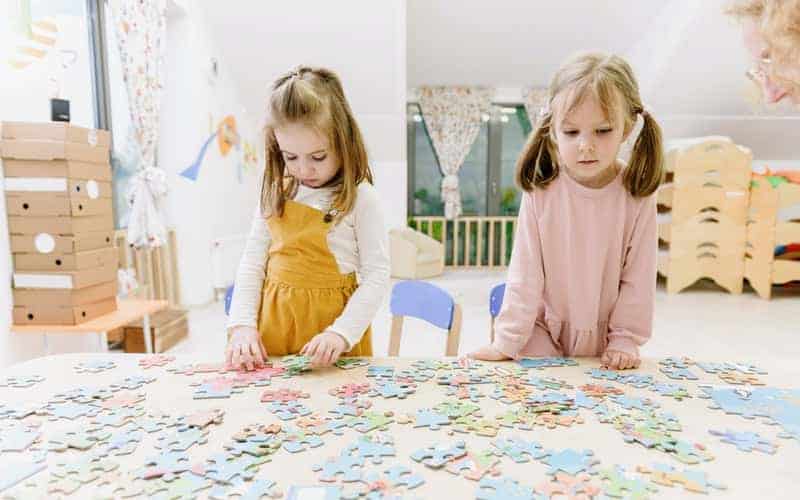
Best puzzle themes for children
When choosing a jigsaw puzzle, it is important to consider the theme. There are many different themes, such as animals, the solar system, cartoon characters, etc. Choose a theme that your child is interested in for the best results. It’s more likely to improve their problem-solving abilities.
Colorful puzzles are a great way to improve younger kids’ fine motor and problem-solving skills. Just remember to consider their age, interests, and skill level when making your selection.
Are puzzles good for 4-year-olds?
Yes, your four-year-old can enjoy many different puzzles. With so many kinds of puzzles available, you should be able to find one that is perfect for your child. Wooden puzzles are an excellent choice for smaller children.
For 4-year-olds, I recommend choosing a puzzle with up to twenty-five pieces. These puzzles can be made from different materials, including cardboard, foam, or plastic.
If your child is interested in a particular theme, such as farm animals or cars, you can also look for puzzles with those themes. Finally, make sure to buy a puzzle mat to protect your furniture.
Check out the benefits of puzzles for toddlers.
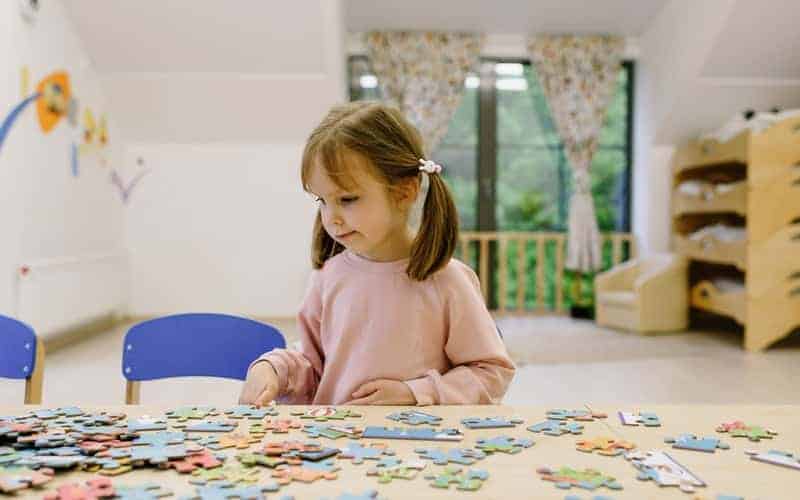
What puzzle can a 5-year-old do?
For 5-year-olds, we recommend choosing a puzzle with up to fifty pieces. At this age, your child should have interests in particular themes.
If so, you can look for puzzles for kids with those themes. If your child is not yet interested in any particular themes, you can choose a puzzle with a more general theme, such as animals or nature. These storage bags help keep the pieces all in one place.
At what age can a child do a 100-piece puzzle?
Kids aged seven and up, can handle puzzles with a hundred or more pieces. However, choosing a puzzle that is not too difficult is essential. Otherwise, your child will become frustrated and give up.
Older children can do puzzles with more pieces when they work with the rest of the family. Invite your older kids to help mom and dad put together a 500-piece puzzle and see how they do.
More motor skills activities for kids
In addition to puzzles, many other activities can help develop motor skills in kids. These include:
- Drawing and coloring printables for kids
- Building with blocks or LEGOs
- Stringing beads
- Playing with Play-Doh
- Doing simple crafts
- Cutting with child-safe scissors
More ways to develop problem-solving skills
In addition to puzzles, many other activities can help develop problem-solving skills in older kids. These include:
- Building with blocks or LEGOs (make this Lego Lighthouse)
- Playing card games
- Doing simple crafts
- Putting together a model kit
- Playing board games
Both puzzles and these other activities can be great ways to spend time with your child. They can help improve your child’s motor skills and problem-solving skills. And they are also a lot of fun!
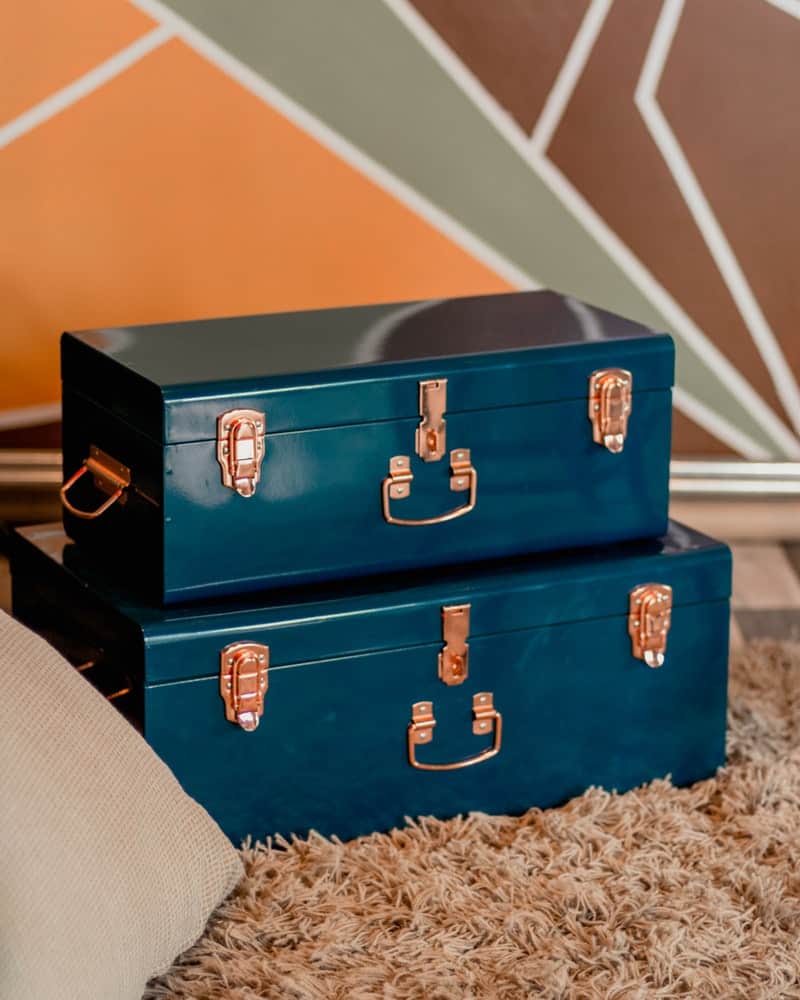
How to store puzzles for kids
Puzzles can be a great addition to any home. But they can also take up a lot of space. Fortunately, there are a few simple ways to store puzzles so they don’t take over your home.
The best option is to keep the puzzle pieces in their own storage box. Most puzzles come in a box and with care, this will last quite a while.
If your children have destroyed the box, you can store the small pieces in a Ziploc bag. Or, make your a storage box out of a shoe box.
Check out these jigsaw puzzle storage ideas.
Hape 200 Piece Puzzles for Kids
This summer, entertain your little ones for hours with Hape’s 5-foot glow-in-the-dark puzzles for kids! Watch as ocean life, dinosaurs, and a magic forest come to life when the lights go out.
These puzzles are perfect for developing motor skills, hand-eye coordination, and problem-solving skills, all while having fun!
The age recommendation is ages 6 and up. These are some of the best choices if you want an educational puzzle. It is so much fun to see them glow in the dark.
This product presentation was made with AAWP plugin.
Plus, this unique puzzle is 1.5 meters long so seeing it all spread out on the floor space is pretty impressive. The pieces are bright and colorful; at 200 pieces, it will be fun for the whole family to put together.
Each puzzle has 10 fun fact cards included. They have bright colors and interesting information related to the puzzle’s theme. This will help encourage critical thinking.
There are lots of great puzzles and fun toys from Hape on Amazon. You’re sure to find one that matches your child’s interests.
If you’re looking for the best puzzles for kids, I recommend you try one of the new puzzles from Hape.

Ellen is a mom of a 25-year-old son and 30-year-old daughter. She is Grandma to one adorable toddler. In what little spare time she has, she loves to read, watch movies, and check out the latest toys and games.
